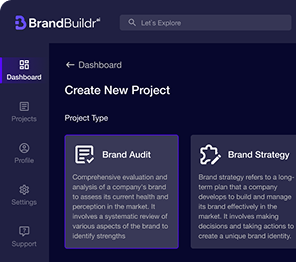Building a social media app that captures users' attention and stands out in a crowded market is no small feat. It requires careful planning, innovative thinking, and a deep understanding of your target audience. In this article, we will explore the key steps and considerations for building a social media app that will rock and thrive in the competitive digital landscape.

Step 1: Define Your Niche and Purpose
Understanding Your Target Audience
Before diving into development, it's crucial to clearly understand your target audience. Who are they? What are their interests, behaviors, and pain points? Conduct thorough market research to gather insights about your potential users. Use surveys, focus groups, and data analysis to understand what they expect from a social media app.
Identifying Your Unique Selling Proposition (USP)
Your social media app needs a unique selling proposition that sets it apart from the competition. Whether it's a specific feature, a niche community, or a unique approach to user interaction, your USP will be the cornerstone of your app's identity. Clearly define what makes your app unique and why users should choose it over existing options.
Step 2: Plan Your Features
Core Features
Every successful social media app has a set of core features that facilitate user interaction and engagement. Some of the essential features include:
- User Profiles: Allow users to create and customize their profiles with personal information, photos, and interests.
- News Feed: A dynamic feed where users can view updates from their connections, follow content, and engage with posts.
- Messaging System: Enable private and group messaging for seamless communication among users.
- Notifications: Keep users informed about activities related to their profiles, such as likes, comments, and new followers.
- Search Functionality: Allow users to search for other users, hashtags, and content easily.
Advanced Features
To make your app stand out, consider incorporating advanced features that enhance user experience and engagement:
- Live Streaming: Allow users to broadcast live videos and interact with viewers in real-time.
- Stories: Similar to Instagram and Snapchat, stories are short-lived posts that disappear after 24 hours, encouraging frequent user engagement.
- Augmented Reality (AR) Filters: Add fun and interactive AR filters for photos and videos to keep users entertained.
- In-App Purchases: Offer premium features or virtual goods that users can purchase within the app.
Step 3: Design an Intuitive User Interface (UI)
Focus on User Experience (UX)
An intuitive and user-friendly design is critical for retaining users. Prioritize simplicity and ease of navigation in your app's design. Conduct usability testing to gather feedback and identify any areas where users may encounter difficulties.
Consistent Visual Design
Maintain a consistent visual design throughout your app to create a cohesive and professional look. Use a consistent color scheme, typography, and iconography to ensure a seamless user experience. A visually appealing design can significantly impact user retention and satisfaction.

Step 4: Choose the Right Technology Stack
Front-End Development
For front-end development, consider using frameworks like React Native or Flutter. These frameworks allow you to build cross-platform apps, saving time and resources by using a single codebase for both iOS and Android.
Back-End Development
For the back-end, you can use technologies like Node.js, Ruby on Rails, or Django. These frameworks provide robust tools for building scalable and secure server-side applications. Ensure your back-end can handle large volumes of data and high traffic, as social media apps often experience rapid growth.
Database Management
Choose a reliable database management system like PostgreSQL, MySQL, or MongoDB. These databases can efficiently manage user data, posts, and interactions. Consider using a combination of SQL and NoSQL databases to handle different types of data effectively.
Step 5: Implement Strong Security Measures
Data Encryption
Protect user data by implementing strong encryption protocols. Ensure that data is encrypted both in transit and at rest to prevent unauthorized access.
Secure Authentication
Implement secure authentication mechanisms, such as two-factor authentication (2FA) and OAuth, to protect user accounts from unauthorized access. Regularly update your security protocols to address emerging threats.
Privacy Controls
Give users control over their privacy settings. Allow them to choose who can view their profiles, posts, and other personal information. Implement robust data protection measures to comply with privacy regulations like GDPR and CCPA.

Step 6: Develop and Test Your App
Agile Development
Use agile development methodologies to break the development process into manageable sprints. This approach allows for iterative development, frequent testing, and continuous improvement based on user feedback.
Beta Testing
Conduct beta testing with a group of real users to identify bugs, gather feedback, and make necessary improvements. Beta testing helps ensure that your app is user-friendly, functional, and free of major issues before the official launch.
Quality Assurance (QA)
Invest in comprehensive quality assurance testing to identify and fix any bugs or performance issues. Conduct both manual and automated testing to ensure your app functions smoothly across different devices and operating systems.
Step 7: Launch and Market Your App
Pre-Launch Marketing
Build anticipation for your app by engaging in pre-launch marketing activities. Use social media, blogs, and email marketing to create buzz and attract early adopters. Offer sneak peeks, beta access, and exclusive content to generate interest.
App Store Optimization (ASO)
Optimize your app's listing on the App Store and Google Play Store to improve visibility and attract downloads. Use relevant keywords, compelling descriptions, and high-quality screenshots and videos to showcase your app's features.
Influencer Partnerships
Collaborate with influencers in your niche to promote your app. Influencers can help you reach a wider audience and build credibility. Offer incentives for influencers to use and recommend your app to their followers.
Social Media Marketing
Leverage social media platforms to promote your app and engage with potential users. Create engaging content, run ads, and interact with your audience to build a community around your app.
Step 8: Monitor and Improve
User Feedback
Continuously gather feedback from users to understand their needs and pain points. Use surveys, reviews, and in-app feedback mechanisms to collect insights and make data-driven improvements.
Analytics
Implement robust analytics tools to track user behavior, engagement, and retention. Use this data to identify trends, measure the success of features, and make informed decisions about future updates.
Regular Updates
Regularly update your app to introduce new features, fix bugs, and improve performance. Keep users engaged by providing fresh content and responding to their feedback. Timely updates show that you are committed to delivering a high-quality user experience.
Community Building
Build a community around your app by encouraging user interaction and engagement. Create forums, groups, and events where users can connect, share experiences, and provide feedback. A strong community fosters loyalty and helps spread the word about your app.
Building a social media app that rocks requires innovative features, user-centric design, and a deep understanding of your audience.
Conclusion
Building a social media app that rocks requires careful planning, innovative features, and a focus on user experience. By understanding your target audience, designing an intuitive UI, choosing the right technology stack, and implementing strong security measures, you can create a compelling app that stands out in a crowded market. Continuous monitoring, user feedback, and regular updates are essential for maintaining and improving your app's performance and user satisfaction. With dedication and the right strategies, you can build a social media app that not only rocks but also thrives in the competitive digital landscape.
Heading 1
Heading 2
Heading 3
Heading 4
Heading 5
Heading 6
Lorem ipsum dolor sit amet, consectetur adipiscing elit, sed do eiusmod tempor incididunt ut labore et dolore magna aliqua. Ut enim ad minim veniam, quis nostrud exercitation ullamco laboris nisi ut aliquip ex ea commodo consequat. Duis aute irure dolor in reprehenderit in voluptate velit esse cillum dolore eu fugiat nulla pariatur.
Block quote
Ordered list
- Item 1
- Item 2
- Item 3
Unordered list
- Item A
- Item B
- Item C
Bold text
Emphasis
Superscript
Subscript






















.avif)



.avif)

.avif)


